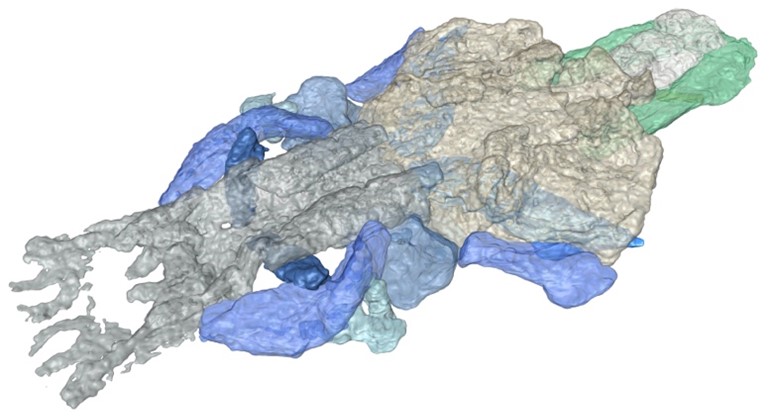DATE2022.05.26 #Press Releases
Uncovering the identity of a 400-million-year-old mystery vertebrate
Disclaimer: machine translated by DeepL which may contain errors.
-Precise Observation of Fossils by Synchrotron Radiation X-ray Micro-CT
RIKEN
Graduate School of Science, The University of Tokyo
Summary
An international Visiting Researcher, Dr. Tatsuya Hirasawa (Associate Professor, The University of Tokyo), Senior Staff, Dr. Shigeru Kuratani (Team Leader, Morphology and Evolution Research Team, RIKEN Center for Frontier Research), and their colleagues in the Kuratani Morphology and Evolution Laboratory, RIKEN Central Administration Bureau, have used synchrotron-radiation X-ray micro-CT (SRX& micro;CT) to precisely observe the morphology of the fossil skull of the Middle Devonian (400 million years ago) vertebrate Palaeospondylus gunni, and discovered that this animal was closely related to the ancestors of terrestrial vertebrates.
This research result indicates that animals with strange morphological patterns that were not previously known existed during the transition from fish to terrestrial vertebrates, and is expected to contribute to a fuller understanding of the early evolutionary process of terrestrial vertebrates, including humans.
In this study, the international research group identified a Paleospondylus fossil with a perfectly preserved skull, and succeeded in obtaining a high-resolution, high-contrast tomographic image by SRXµCT at the SPring-8 large synchrotron radiation facility. The tomographic images show microstructural structures such as cell lumen (luminal space where cartilage cells used to reside) and chondrocyte membrane bone (mineralized bone tissue around cartilage), which were used to clarify the shape of the boundaries (joints) of each bone element in the skull. The morphological features of the Paleospondylus skull are similar to those of pterygotes and other pterygotes among vertebrates, and phylogenetic analysis suggested that it is a basal tetrapod. The combined peculiarities (lack of teeth and fins/limbs) are also found in larval tetrapods, indicating that the evolutionary origin of larval morphology may be very old, dating back to 400 million years ago.
The study was published in the online edition of the scientific journal Nature on May 25 (May 26, Japan time).

Figure: 3D model of a skull of Paleospondylus (rostrum on the left, occipital region on the right)
For more information, please visit the RIKEN website.


